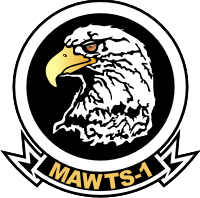By Robbin Laird and Ed Timperlake
We all know what tunnel vision is. But what is necessary for successful adaptation of a military in a dynamic situation is to be able to do trajectory vision.
In other words, the ability to adapt but to do so with an eye on realistic adaptation which can be driven by new systems or new con-ops.
We had the chance to talk with LtGen Fred McCorkle about his involvement and experience at MAWTS-1 and how that shaped trajectory vision for the USMC which has been clearly demonstrated in adopting the Osprey and the F-35B and changing their con-ops to reflect doing so. It is not just about adding some new technology; it is about understanding how best to leverage it to get the desired combat effect against a reactive enemy.
In our discussion with him, he underscored how the MAWTS approach was established and evolved to shape realistic innovation but with an eye to the future. And those who have been involved in the WTI experience were able to embrace change but had a “pretend I am from Missouri” kind of experience: show me.
This has led to MAWTS-1 being what we have referred to as an incubator for change. Or another way of putting it, rather than being trained to exercise tunnel vision, Marines have been trained to have trajectory vision or warriors who can embrace change. But not briefing chart change; real change demonstrated through what Lt General Rudder has called the “physics of warfare.”
According to McCorkle: “I was a young major at the time when first introduced to MAWTS-1. When I went to the command, the DCA at the time was LtGen Fitch. When he first came, he said he was going to shut down MAWTS. But by the time he left his post, he had become one of the biggest supporters of MAWTS.”
We asked him, what did he think changed the DCA’s mind?
McCorckle told us that the fact that MAWTS trained for integrated MAGTF operations was really the key. “Those who came to the WTIs witnessed the best MAGTF training being done in the USMC.”
He credited John Lehman, then Secretary of the Navy, and the early commanders of MAWTs for setting in motion the framework to be able to provide for such integrated training. He also noted that Lehman allowed senior MAWTS officers, including himself, to receive clearances to have access to black Navy programs. This allowed them to have the possibility of trajectory rather than tunnel vision as commanders.
At the time, McCorckle noted that even the DCA’s were not read into programs that the Admirals were allowed to be read into. This clearly created a problem as the introduction of new air systems and capabilities is a driving force for change.

One narrative McCorckle relayed was concerning the importance of the coming of night vision goggles. Although the night vision googles of the day were not perfect, McCorckle pointed out to general officers when he would have them experience low flights at night the following: “Would you rather have 20:50 vision with the NVGs or fly with 20:400 vision. They got the point.”
We then asked him about the safety of flight challenge. McCorckle told his about his approach. “As CO of MAWTS I would brief every class and put up on the board a drawing. Here is this box. We want you to operate at the edge but not to go over the edge. You can operate near the corners of the box. I’ll go to the mat for you to defend you if you operate that way. But if you go ¼ of inch outside of that box, I will be the first to “Recommend Pulling Your Wings”!
McCorkle also underscored the significance of MAWTS in terms of its COs having generally gone on to take General Officer Command and to bring their MAWTS experience forward and then re-invigorating MAWTS by contributing from their command position as well.
We then asked him about his Osprey experience and how MAWTS had prepared him for it.
He started by recounting a meeting with LtGen Fitch. “One day Fitch came up to me and put his arm around me and congratulated me on flying 65 different aircraft. I thanked him and told I was very humbled by the experience. He then underscored that he had flown 132 different aircraft!”
Well, the Osprey was an aircraft like no other. Something which McCorckle experienced on his first piloting of the aircraft. It was certainly not a helicopter, a problem which still affects helicopter pilots who come to the Osprey and do not unlearn their rotorcraft skills.
As LtGen Fred McCorkle underscored: “At the end of a runway, a CH-46 will top end at 140 knots. If you are in loaded down Cobra, you are lucky to get to 120 knots at the end of the runway. And when I first flew it, I was at 250 knots at the end of the runway taking off. The test individual with me in the plane said we are limited in the speed we can go and you are already over the approved limit. I said the aircraft is virtually in neutral and we can go a lot faster and went to 330 knots.”
This is what one can call trajectory vision at work


